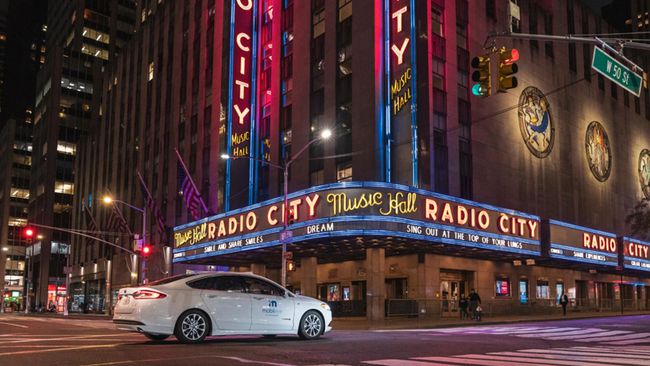Intel¡¯s subsidiary Mobileye announced today that Mobileye¡¯s self-driving car test fleet has opened in New York City, which has become part of Mobileye¡¯s rapidly expanding global self-driving car test program. New York City is the largest city in North America and has one of the most challenging driving environments in the world. The entry of Mobileye's autonomous driving fleet into New York City fully demonstrated the strong strength of Mobileye's autonomous driving technology and demonstrated the unique advantages of Mobileye's solution in supporting rapid geographic and economic expansion.

Professor Amnon Shashua, Intel¡¯s senior vice president and president and CEO of Intel¡¯s subsidiary Mobileye, said: ¡°The implementation of road tests in a city with complex road conditions like New York City is a key step in testing the capabilities of autonomous driving systems and promoting the commercialization of autonomous driving technologies. ."
As shown in the video below, a self-driving car equipped with Mobileye's pure camera subsystem is driving on the crowded streets of New York City. The roads are crowded with pedestrians, cyclists, and unwilling drivers, side by side parking areas, construction areas, emergency vehicle driving areas, tunnels and bridges, and so on. Among them, Mobileye's True Redundancy™ solution enables the autopilot system to fully bet on the computer vision subsystem while also adding a lidar/radar subsystem to achieve redundancy.
Mobileye recently applied for and obtained a self-driving car test license in New York City, which means that Mobileye can test self-driving cars on the crowded streets of New York City, and Mobileye has therefore become the only company that has been granted a road test for self-driving cars in New York City. Qualified company. Currently, Mobileye's self-driving cars are absorbing valuable practical experience day and night. Among them, there are seven bright spots that are particularly worthy of attention:
Pedestrians: Pedestrians crossing roads are common in many cities, but in New York City, this phenomenon is particularly rampant, and the number of pedestrians is very large. Self-driving cars must make predictions about the behavior of these pedestrians and incorporate these predictions into their driving strategies. Humans do this instinctively, and machines must rely on programming to cope.
Driving behavior: When the street is congested, the driver becomes impatient and doesn't let it go. Drivers in New York City, especially taxi drivers and other professional drivers, compare this to drivers in other cities.
Traffic density and diverse road users: Although New York City¡¯s car ownership is low compared to other major cities in the United States, it includes taxis, limousines, buses, trucks, food trucks, carriages, emergency rescue vehicles, bicycles, and pedals. Including cars and skateboards, the number and types of road users in New York City are particularly diverse.
Side by side parking: who stopped and who didn't? Humans can answer this question more easily than machines. New York¡¯s high population density has caused a large number of transportation vehicles to be parked on highways to unload. Therefore, side-by-side parking is very common in New York City. Although the video shows that Mobileye's self-driving cars can obtain clues from other road users to decide when to go around, for self-driving cars, this kind of decision is still very difficult.
Construction: There are many road construction areas in New York City. Thanks to Mobileye's constantly updated AV Maps, Mobileye knows which roads are under construction. Other companies either rely on their own test vehicles to make maps, or they need to use special mapping vehicles that cost millions of dollars for mapping, but Mobileye can get real-time information about traffic jams or lane closures directly from cars on the road. Data, and these data can and are authorized to the relevant municipal departments for their use.
Tunnels and bridges: Manhattan Island is connected to the surrounding area through 15 tunnels and 21 bridges. Many of the roads contain narrow lanes made of pilings or cones. This is the ¡°Achilles¡¯ one of many self-driving cars. heel". Faced with such complex transportation facilities, even multi-layered roads, Mobileye's crowdsourced AV Maps technology and well-trained sensor systems are well aware of this and can respond calmly.
This city is truly a city that never sleeps (lights!): Although Paris has won the title of "the city that never sleeps," Manhattan is also brightly lit at night. Visual noise and light pollution pose great challenges to the sensor system of autonomous vehicles, and Mobileye's autonomous vehicles can easily deal with it with only a few algorithm adjustments.